So, I guess you are reading this article because you are looking for a smart way to improve software development. What can Agile Software Development do for your projects? Quite a lot. Agile is known as one of the most effective methods of project management for app development. We can say that it has transformed the way many organizations manage their project right now. Well, most beginners get confused with this technology as they pick only certain features and try to let a tool manage the development process for them. Why should you pay attention to Agile? Well, according to TechBeacons, 100 of the best world's firms are technology companies. What management method is practiced in these kinds of companies? Agile. It's time to take a look at the agile methodology and understand significant aspects of this project management approach.

Table of Contents:
1. What is Agile methodology in software development?
2. Agile vs. Traditional development (Waterfall Model).
4. What is the role of the Product Owner?
5. What are the benefits of Agile?
6. How to start with Agile software development?
What is Agile methodology in software development?
We can say that Agile is an approach to software development. In short, Agile is a mindset, the ability to create and respond to encountered change. It is the way of thinking, acting, and dealing with a smooth and turbulent environment. It focuses on team collaboration, feedback, continual planning, and learning.
Agile Software Development is a dynamic process that assumes creating Minimum Viable Products (MVPs) that go through several repetitions until the final solution is achieved. This method is opposite to the concept of trying to deliver the final IT product once near the deadline. Agile is about short cycles and giving business value to customers early. Feedback is an important part of the Agile method, and it's gathered and implemented continually. The goal is to deliver business value rapidly.
Agile Software Development is much more than frameworks and practices. It is an umbrella term or a set of various incremental and iterative software development methodologies that include Dynamic Systems Development Method (DSDM), Extreme Programming (XP), Crystal, Lean Development, Scrum, and Feature-Driven Development (FDD). This technology provides a lightweight framework that diminishes the overall risk associated with software development.
Agile development has emerged from the real-life project experiences of some well-known software professionals who had encountered difficulties in traditional development technologies. The technology has been introduced as a direct solution to the problems associated with traditional software development, in terms of both processes and philosophy. As a result, we received an Agile Manifesto.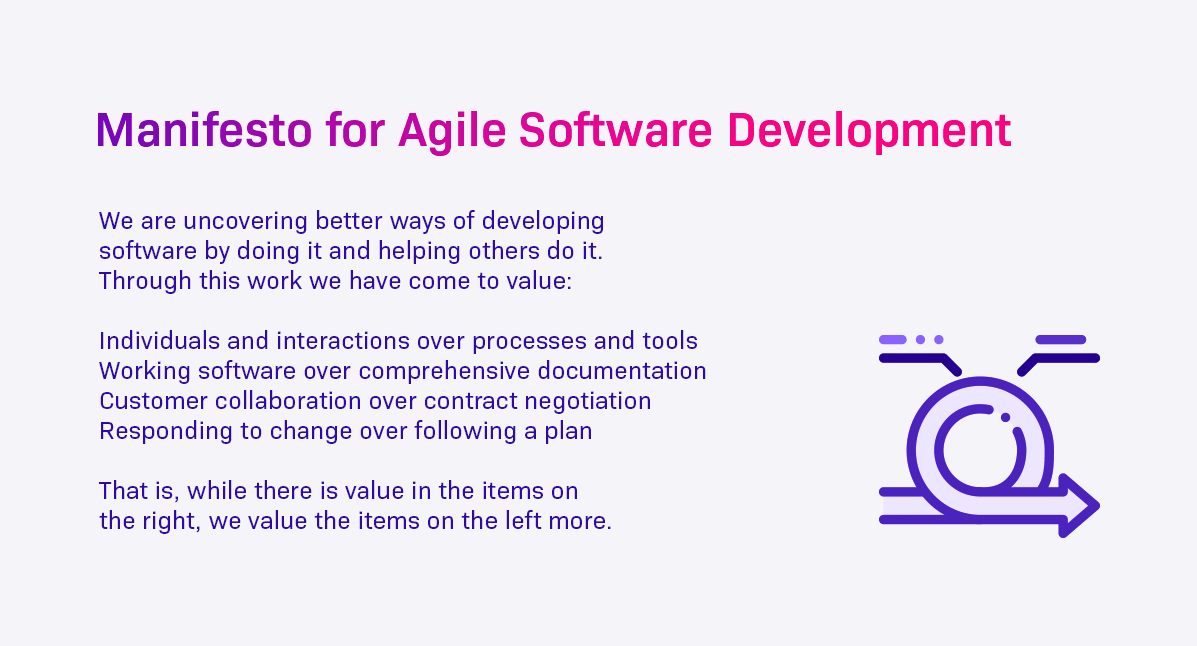
Agile vs. Traditional development (Waterfall Model)
Traditional software development is not iterative. It is a process consisting of phases like requirement analysis, design, implementation, testing and maintenance. The Waterfall Model is a stiff, rather long-term planning concept. The main disadvantage of traditional development is wasting time on long-term planning while the market needs extort to change the idea of the IT product.
Agile methods focus on short-time cycles. That's why Agile is more transparent, adaptable, and tends to deliver value since the beginning of the development process. It is a much more safe option because team members can quickly react to changes and implement the proper app function. How do they do that? Well, software development teams work in sprints (short periods) during which they complete a set amount of work. We can say that sprints are the heart of the agile methodologies. The next fundamental elements of agile development are daily meetings (stand-ups) that involve the core development team (product owners, developers, and the scrum master). Stan-ups keeps the team informed and connected.
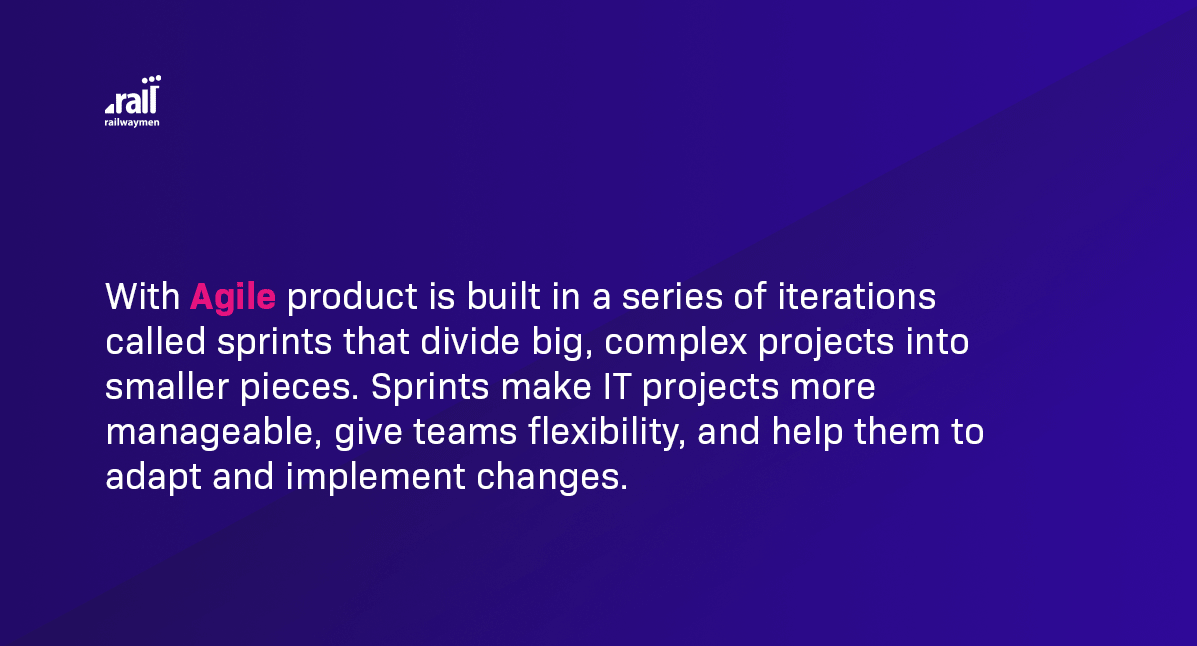
What is Agile Methodology?
Agile methodology is a well-researched practice that improves consecutive iteration of development and testing during the entire software development process. Several methodologies are used in Agile Software Development. Some of them are listed below:
Scrum
Scrum is a project management framework for executing complex development projects. Frameworks like Scrum help to start thinking in a more agile way. The idea of the Scrum is about continuously shipping value to the customers. Scrum gives the idea of the completed and yet to be completed tasks. It helps teams work together. Scrum is adaptable and allows team members to modify according to the project requirements. It is also a powerful visual aid. Scrum has earned high popularity in the agile development community due to its proven productivity, high functionality, and power to act as a great tool for several methods promoted by different agile methodologies. It's a framework for getting the work done.
Kanban
Kanban is a work management system designed to visualize the work and maximize productivity. Kanban means visual signal in Japanese. The idea of this methodology is to visualize the work and be able to show it to the teammates. Teams implement this approach by building boards, filling it with cards, and setting up a work in progress. Boards are an important part of this agile method. We can use online tools like Trello or Jira, to implement it in our work. The key benefit of the Kanban is that we can optimize the workflow and measure it. We can use this work management method in any project, not only for software development.
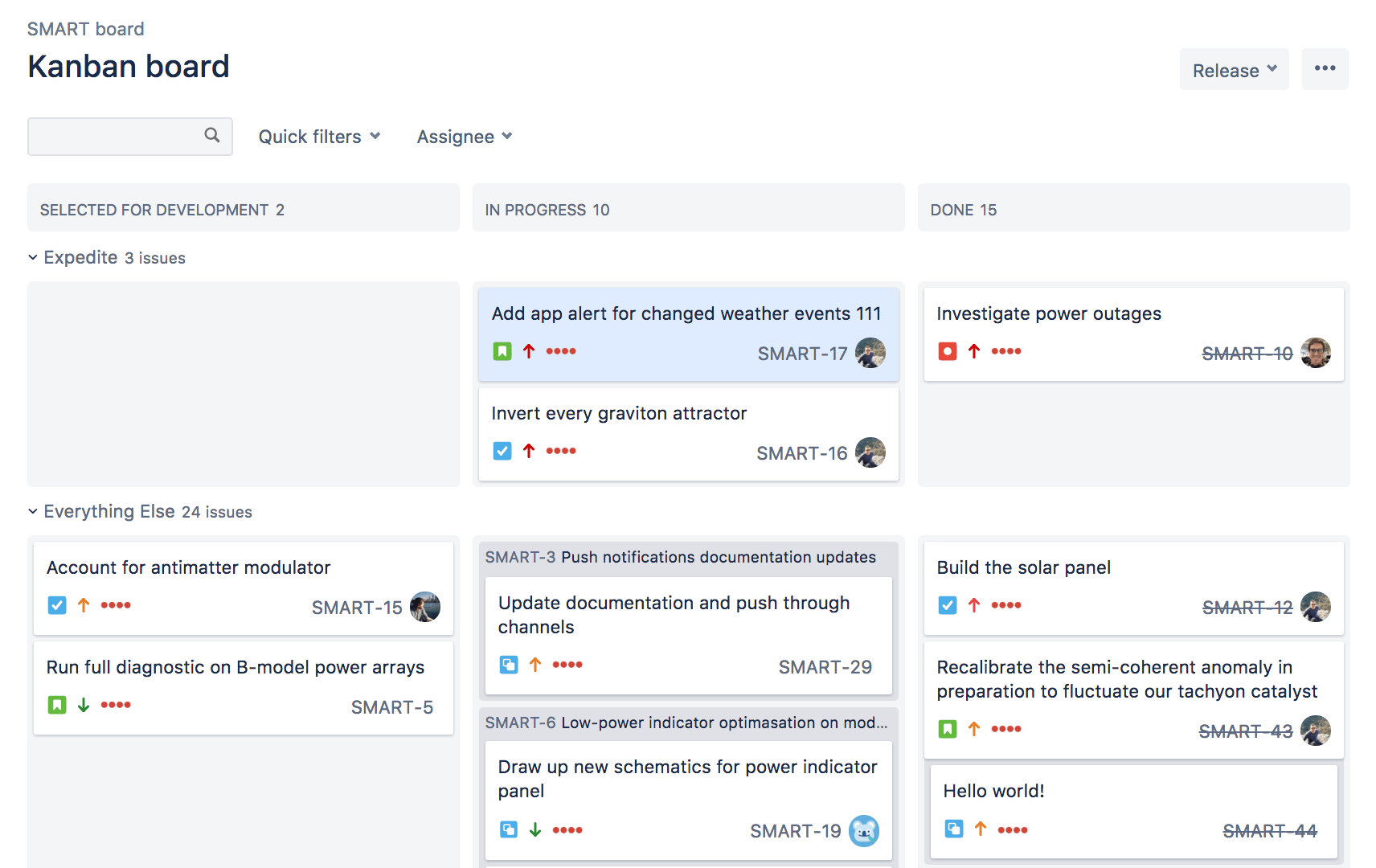 Source: support.atlassian.com
Source: support.atlassian.com
Roadmaps
Although Agile is about short time cycles, it doesn't mean that long-term planning is completely discarded. The development team needs to have a vision of the products. The roadmap is an important part of agile software development. It provides the context to the team's every-day work and shows how the product will evolve. Product Owner describes the roadmap when new features will be released. Multiple agile teams may share the same product roadmap. It helps to systematize work on a large, complex project.
Product Backlog
It is a list of tasks or a to-do list that the software development team gets from the roadmap. These are necessary pieces to complete the complex task. The most important tasks are at the top of the product backlog, so the development team knows what to deliver first. If one of the features does not contribute to the end goal, it should be removed. In addition, if a task or function becomes crucial to the development, it is typically added to the project backlog. This list of information is the primary authoritative source for agile development team members. It needs to be managed and prioritized by Scrum Master, which must be assigned to the scrum team. The Product Backlog may consist of the bug fixes and other project requirements that need to be done for successfully delivering a deployable software system.
What is the role of the Product Owner?
Product Owner is the key stakeholder in the project who shares a huge role in software development. The position is visionary as the Product Owner gives a vision of the project to his/her development team members, creates the backlog and prioritizes product needs. This person is also responsible for keeping an eye on the turnaround time of the project. Product Owner should understand customer behavior and needs. The development team has to deliver value that will attract customers. So, the role of the Product Owner also involves value control.
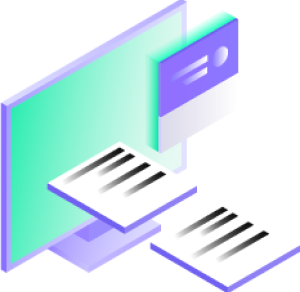
Now we want to share it with you!
What are the benefits of Agile?
IT products have to respond to current customers' needs. Market trends are changing fast. The main advantage of Agile methodology for clients is the flexibility and the ability to adapt to the market situation. It allows to quickly change the plan if it's needed.
#1 Higher quality of the product
The main goal of Agile software development is to improve product quality. Agile focuses on delivering business value from the beginning. Testing and feedback is a part of sprints. Regular checkups show whether the application is working in the correct way. Development teams are up to date with issues. The Product Owner is able to make a quick change if it's needed. The agile approach excludes the appearance of unpredictable bugs.
#2 Higher customer satisfaction
Agile methods keep customers involved and informed during the project development process. As Agile software development delivers quality products that respond to customers' needs, the chance for an app success is much higher. Of course, it has a significant impact on clients' satisfaction. Agile project management allows delivering MVP pretty fast on the market, and it gives the opportunity to check whether the application responds to industry trends and needs. It reduces the cost of potential failure.
#3 Flexibility and control of the project
Sprints and daily meetings give Product Owners full control over the projects. Continuous delivery, improvement, planning, and feedback are part of Agile software development. That's why organizations based on Agile can successfully adapt to changing environments and requirements. The costs of making changes at any stage of the software development are lower than in the traditional Waterfall Model.
#4 Faster ROI
Agile software development allows to receive faster Return on Investment (ROI). Development teams deliver MVP because they can prioritize the features and allocate resources proportionately. We can say that, generally, Agile project management is faster and more productive. It's significant for businesses from fast-moving industries, where the product needs to respond to changes quickly.
#5 A goal-oriented team
Agile development is known as an open for idea and feedback exchange. It clearly defines the roles and responsibilities of every team member. While the team is adapted to a flexible environment, new features and changes can be implemented at any stage of the project. Teams can work together on one roadmap. That's why Agile is a perfect development method for complicated products.
How to start with Agile software development?
Becoming Agile is a process that will require a change of mindset and habits. I advise you to start simple. Remember that your team needs to adapt, and too complicated workflow can be hard to understand. Before you start, choose the tool that will suit your process. There are many online tools for Agile software development, for example, Trello, Jira, Wrike, MeisterTask, or Monday.
The first workflow for a development team can look like this:
- To Do (tasks that have no started yet)
- In Progress (tasks that already are in preparation)
- Code Review (tasks that are finished but still waiting for review)
- Done (completely closed task)
Of course, the workflow can be changed and adapted to team or project needs. It's good to start with the initiation meeting and present the advantages of Agile project management to the team. Every member should know their role in the development process. The next step is to define the roadmap, break the time into sprints, and create a specific plan and schedule for the opening sprint. At the end of the first sprint, you should organize a meeting, discuss completed tasks, propose the necessary changes, and plan work for the next sprint. We call it Sprint Retrospective, and it should give answers to the following questions: What went well? What needs improvement? What will we commit to improving in the coming sprint?The cycle repeats until the final sprint will furnish the final product to the customer.
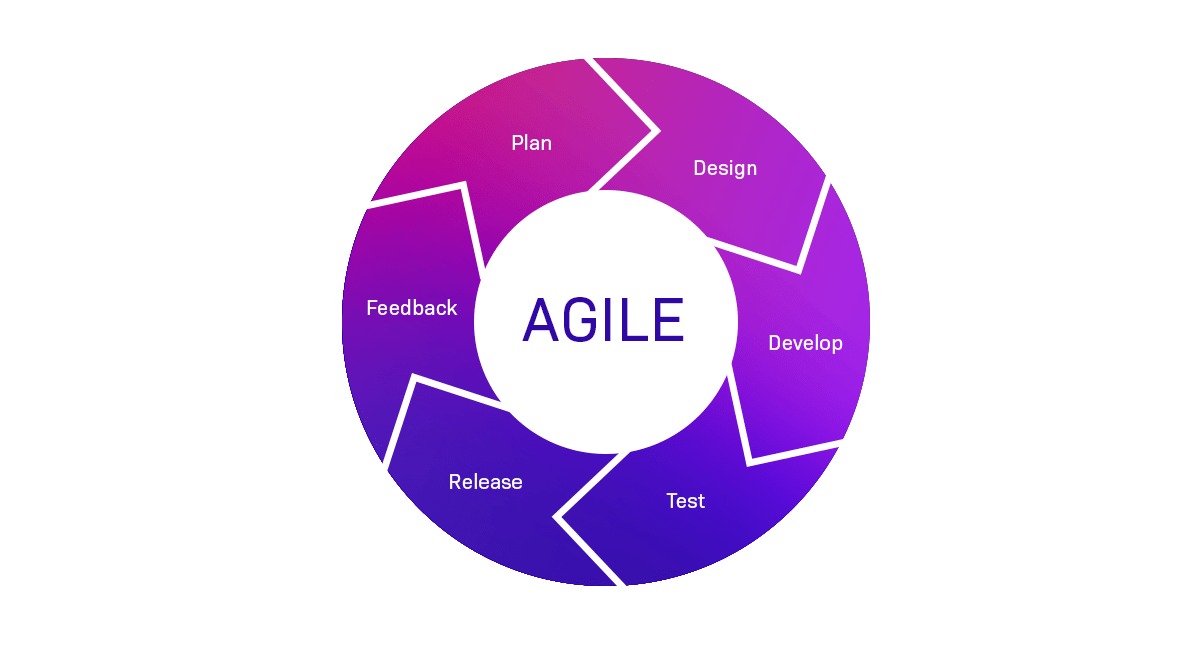
Final thoughts
Teams of all kinds can use Agile methodology. We can implement it in HR, Marketing, Design projects. Agile is the most identified with software development and engineering. Software development usually has a changing environment. Requirements and goals can change rapidly. Agile software development allows us to adapt to those changes. That's why it's crucial to choose a software house that will be familiar with Agile methodologies. Of course, not every project can be driven with Agile in 100%, but even a few Agile elements can significantly improve software development.
If you are willing to know even Agile better, I recommend you to read the book The Lean Startup or to visit the Atlassian Agile Coach website.
We are fans of Agile Software Development because it has a lot of benefits for both the software house and the client. We want to increase efficiency even more. That's why we launched an Agile Discovery Phase service. What is it all about? Check the article:
Agile Discovery Phase: a Must Have for Your Business






